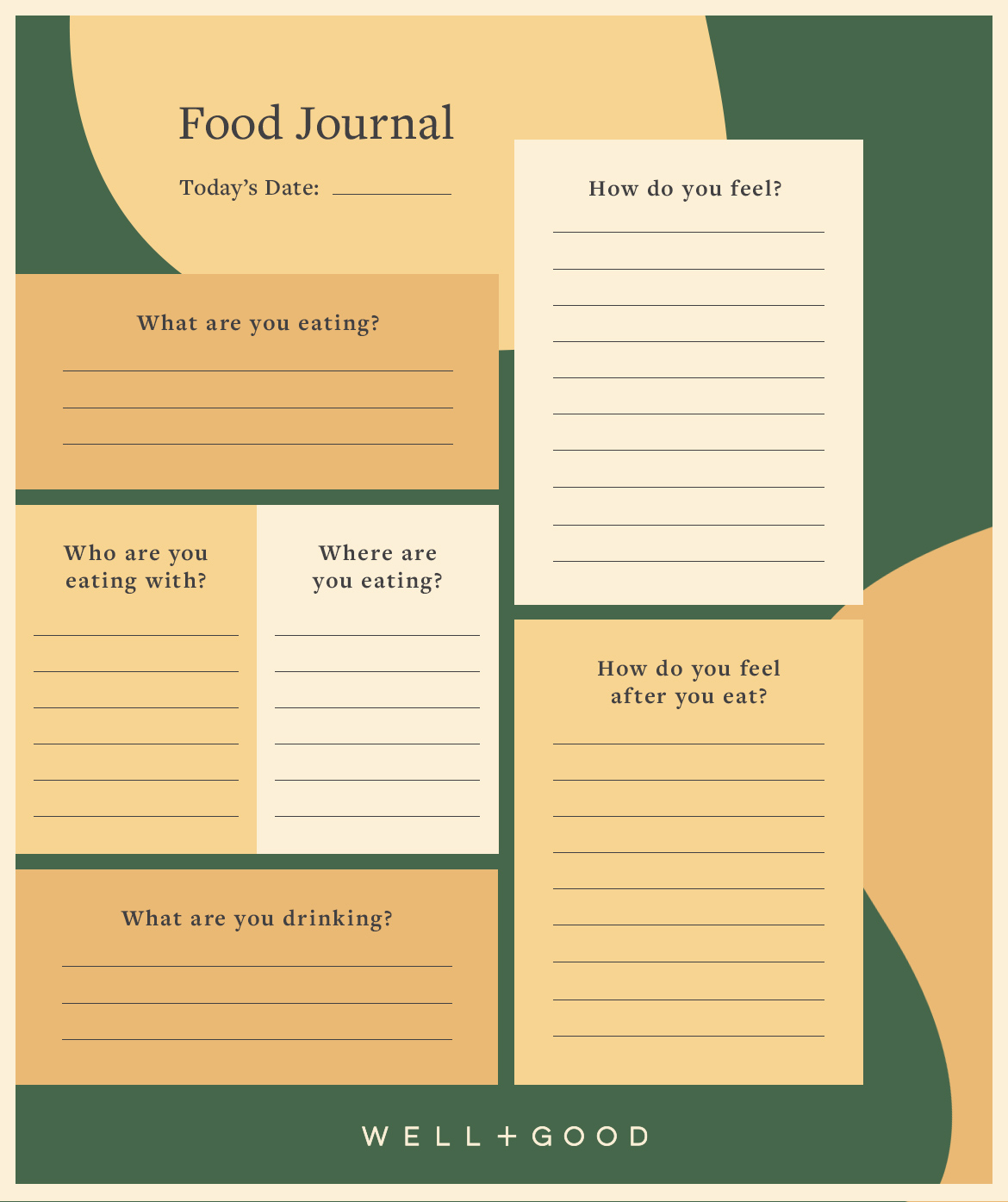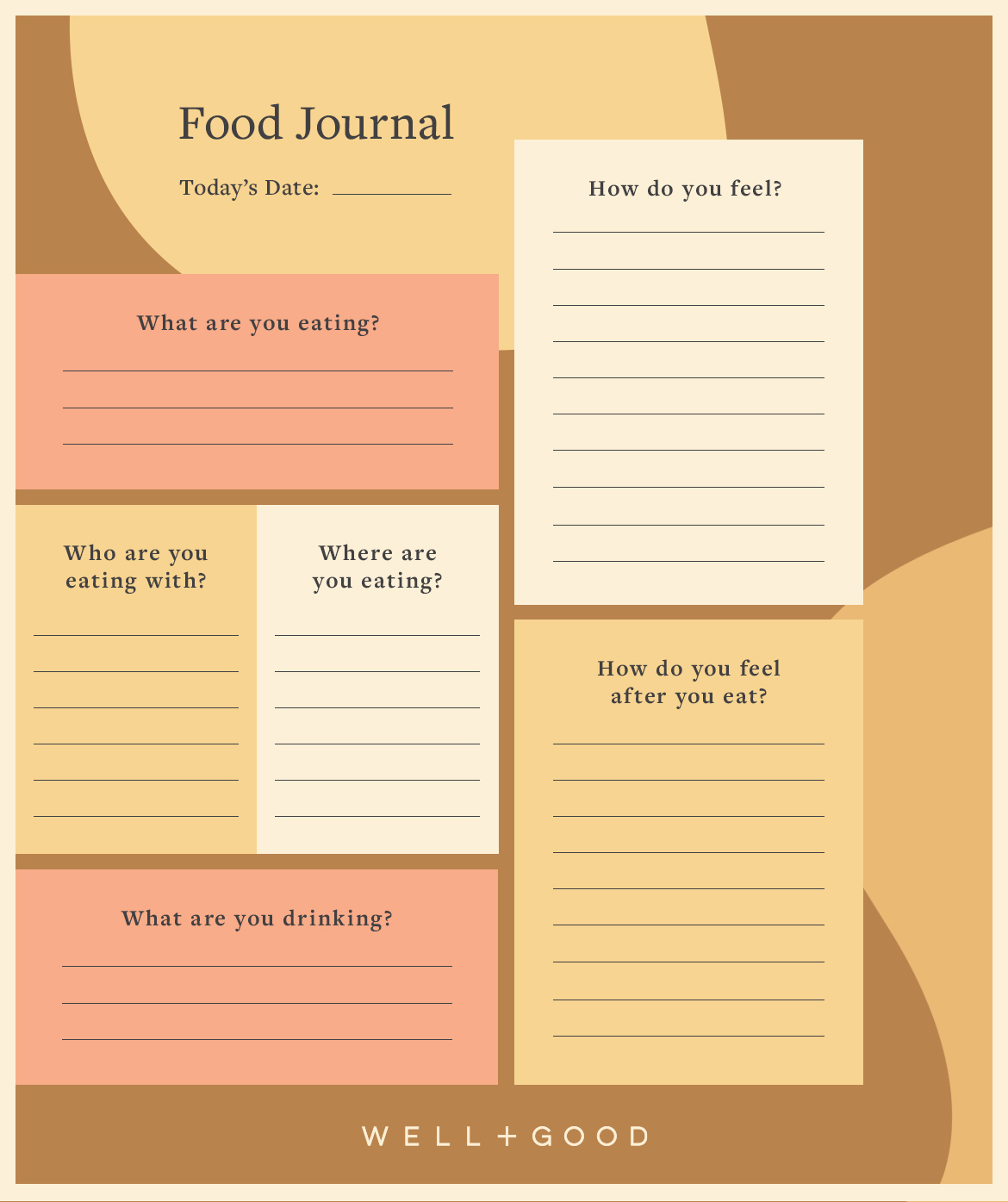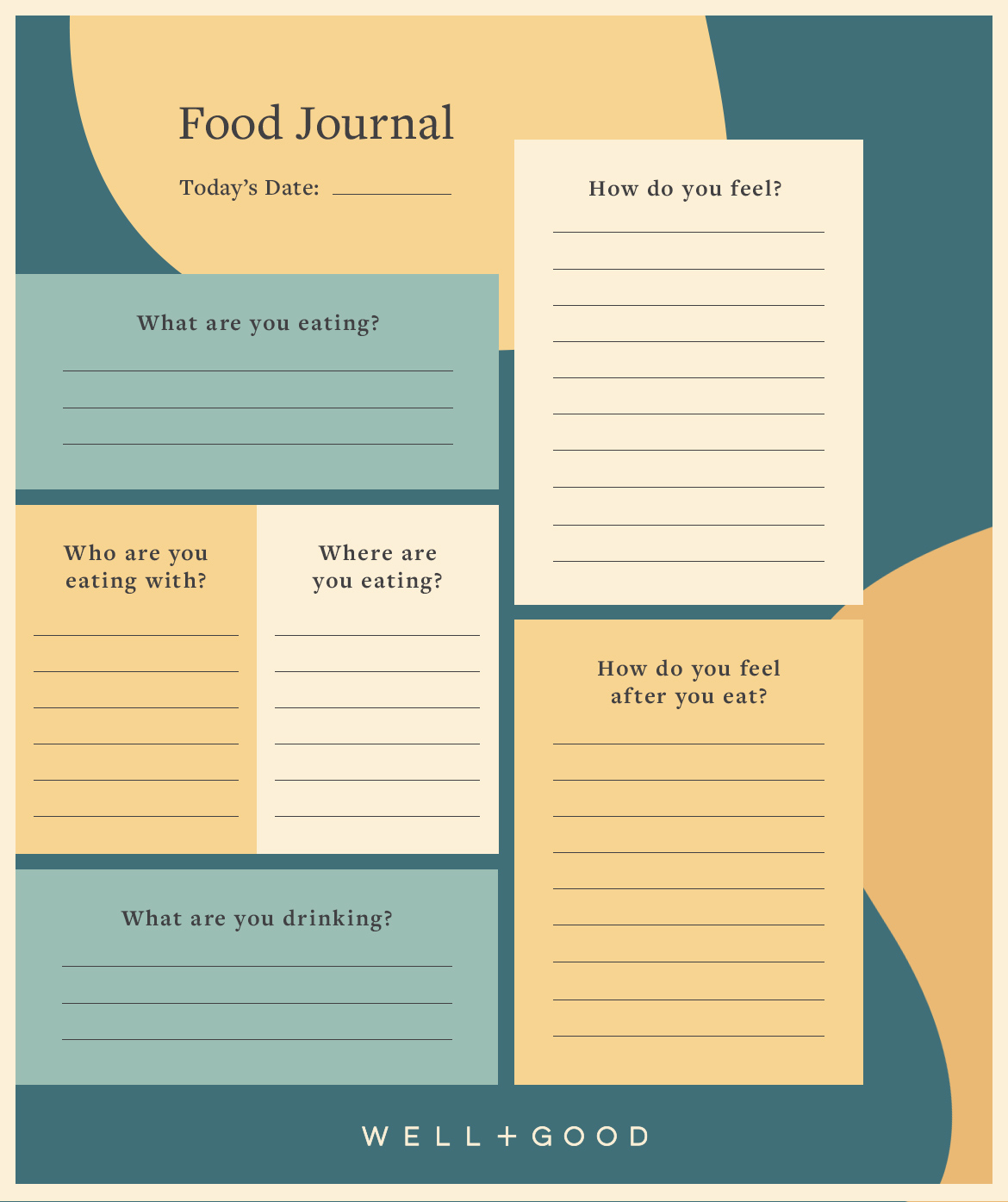As more people have learned about the impact food has on both physical and mental health, it’s sparked a growing interest in food journals. This is beyond the calorie counting of the past, which strictly has a diet mentality. Keeping a more holistic food journal is about seeing the connection between what you eat—and the circumstances surrounding it—and how it makes you feel, inside and out.
Registered dietitian and Be Well founder Alana Kessler, RD, says she always recommends her clients keep a food journal. “Keeping a food journal has many benefits, including helping someone get a deeper understanding of what foods make them feel good,” she says. If you’ve never kept one before, knowing how exactly to do it can be tricky. What does a food journal template even look like?
Not only does Kessler talk more about how a food journal can be helpful, following her insights are food journal templates to print out and use for free.
4 benefits to keeping a food journal
1. It can help pinpoint what foods may be causing problematic health issues
If there’s anything physical you’re experiencing on a regular basis—including bloating, digestive distress, or rashes—Kessler says a food journal may help you figure out what could possibly be causing it. “So often we think we know what we eat, but we don’t realize the whole truth,” she says. “A food journal is a mirror that really reflects what you put into your body.”
Over time, you may notice certain patterns. For example, someone may realize that they always feel bloated after drinking kombucha, a sign that the carbonation may be too much for them. Or someone else may notice that their skin looks blotchy after eating gluten or dairy, indicating that they could have an intolerance. If you are experiencing any physical health problems, it’s still important to see a doctor, but Kessler says your food journal can be a tool you bring to your appointment, which may help point to (or rule out) any potential culprits.
2. It shows how food may be impacting your mental health
Kessler points out that food can have a direct impact on mental health, including anxiety, depression, or energy levels. For example, if you notice that you have a spike in anxious feelings after your morning coffee, it could be a sign that you might need to switch up your a.m. beverage.
“It’s also important to think about more than just the actual food,” Kessler says. “Where we eat, who we eat with, what we’re doing when we eat, and how we feel are all important to think about.” Always eating lunch at your desk while answering emails, she says, could make someone eat faster than they would away from their computer. This, she explains, could impact digestion or even how much you’re actually able to enjoy your meal.
3. Food journals paint a picture of what makes you feel good
Besides helping highlight ways what you eat could make you feel worse physically or mentally, Kessler says food journals also show what makes you feel amazing. If you made a smoothie and it was the first one you ever made that actually didn’t leave you feeling hungry 20 minutes later, that’s definitely worth writing down so you remember what was in it and how it made you feel.
4. They’re a tool you can bring to health experts
As Kessler mentioned, it can be helpful to bring your food journal to doctor’s appointments as a way to point to or eliminate connections to foods that may be negatively impacting your health. Similarly, she says it can also be helpful to share your food journal with a registered dietitian, nutritionist, or health coach. “I have all my clients share their food journals with me and the discussions we have about them are different, depending on their health goals,” she says.
For example, if one client’s food journal shows that they tend to overeat when they’re feeling stressed, Kessler will talk about how getting to the root of the stressor is important. Someone else may be training for a marathon and a food journal can help a nutritionist or dietitian make sure they’re getting all the proper nutrients their body needs.
What to log in your food journal template
Here’s what Kessler says to write down in your food journal:
- What you’re eating and drinking
- How you feel (happy, sad, lonely, stressed, busy…)
- Where you’re eating (home, work, while walking, in the car…)
- Who you’re eating with
- How you feel after you eat (What positive or negative effects do you notice? Do you feel energized? Tired? Bloated? Were you unable to sleep that night?)
“All of this is important to log because, again, how you feel is about so much more than what’s on your plate,” Kessler says. “The circumstances surrounding when you eat matter greatly, too.”
3 ways to keep a food journal
1. Write it out
One common way to keep a food journal is in a notebook with space to log the five above points Kessler mentions. The food journal templates at the end of this article have all her prompts listed out, so they can be helpful to use to make sure you don’t leave anything out.
2. Take a photo
Sometimes, you may not have time right at the moment to write down everything Kessler recommends. Maybe you’re out to dinner with friends, eating during a work meeting, or simply don’t want to do it then and there. In those cases, Kessler recommends taking a photo of your meal so you can answer the prompts later. “I actually always recommend taking a photo anyway,” she says. “Because nothing is clearer than a photo!”
3. Use an app
There are also apps that make keeping a food journal easy; all you need is your phone. FoodView is one app that’s free and also allows photos to be uploaded. Dining Note is another free app, which provides a no-frills way to journal about meals and also movement, if that’s something you want to incorporate into your journal as well.
“Food journals should be personal, so create a structure and template that works for you,” Kessler says. Most importantly, she says, it should make you feel better, not worse. Food journals are not meant to feel guilty or shame about anything you eat. Instead, they’re meant to be a tool used to help determine what makes you feel your best.
Below are food journal templates to print out and use at home:



Oh hi! You look like someone who loves free workouts, discounts for cult-fave wellness brands, and exclusive Well+Good content. Sign up for Well+, our online community of wellness insiders, and unlock your rewards instantly.
from Well+Good https://ift.tt/3lffe2o
via IFTTT
